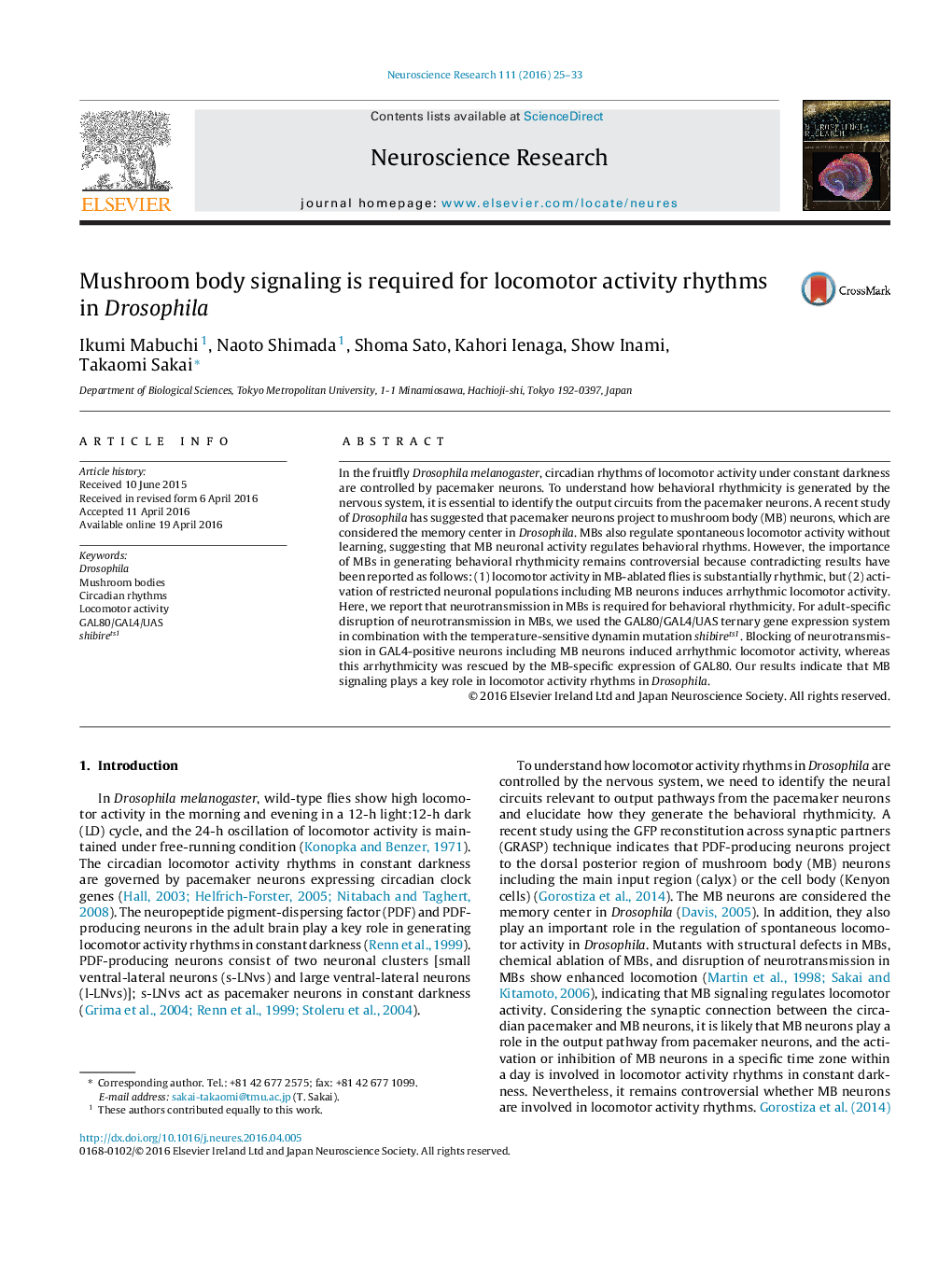| کد مقاله | کد نشریه | سال انتشار | مقاله انگلیسی | نسخه تمام متن |
|---|---|---|---|---|
| 4351303 | 1615272 | 2016 | 9 صفحه PDF | دانلود رایگان |

• The importance of MBs in behavioral rhythmicity remains controversial in Drosophila.
• The locomotor activity in MB-ablated flies is substantially rhythmic.
• Activation of MB neurons induces arrhythmic locomotor activity.
• We found that blocking of neurotransmission in MBs induces behavioral arrhythmicity.
• This study supports the notion that MB signaling is required for behavioral rhythms.
In the fruitfly Drosophila melanogaster, circadian rhythms of locomotor activity under constant darkness are controlled by pacemaker neurons. To understand how behavioral rhythmicity is generated by the nervous system, it is essential to identify the output circuits from the pacemaker neurons. A recent study of Drosophila has suggested that pacemaker neurons project to mushroom body (MB) neurons, which are considered the memory center in Drosophila. MBs also regulate spontaneous locomotor activity without learning, suggesting that MB neuronal activity regulates behavioral rhythms. However, the importance of MBs in generating behavioral rhythmicity remains controversial because contradicting results have been reported as follows: (1) locomotor activity in MB-ablated flies is substantially rhythmic, but (2) activation of restricted neuronal populations including MB neurons induces arrhythmic locomotor activity. Here, we report that neurotransmission in MBs is required for behavioral rhythmicity. For adult-specific disruption of neurotransmission in MBs, we used the GAL80/GAL4/UAS ternary gene expression system in combination with the temperature-sensitive dynamin mutation shibirets1. Blocking of neurotransmission in GAL4-positive neurons including MB neurons induced arrhythmic locomotor activity, whereas this arrhythmicity was rescued by the MB-specific expression of GAL80. Our results indicate that MB signaling plays a key role in locomotor activity rhythms in Drosophila.
Journal: Neuroscience Research - Volume 111, October 2016, Pages 25–33